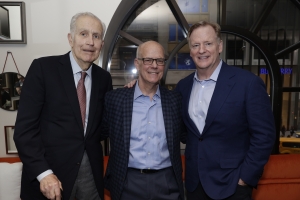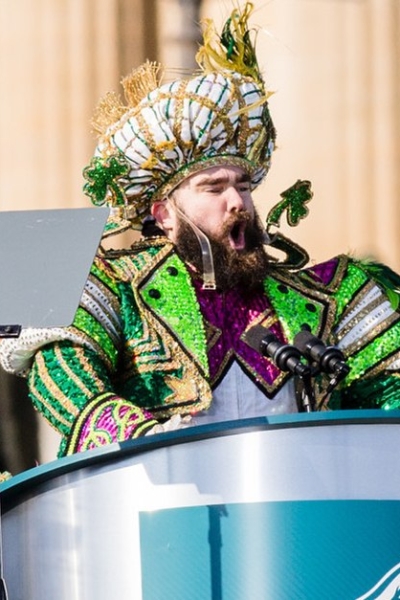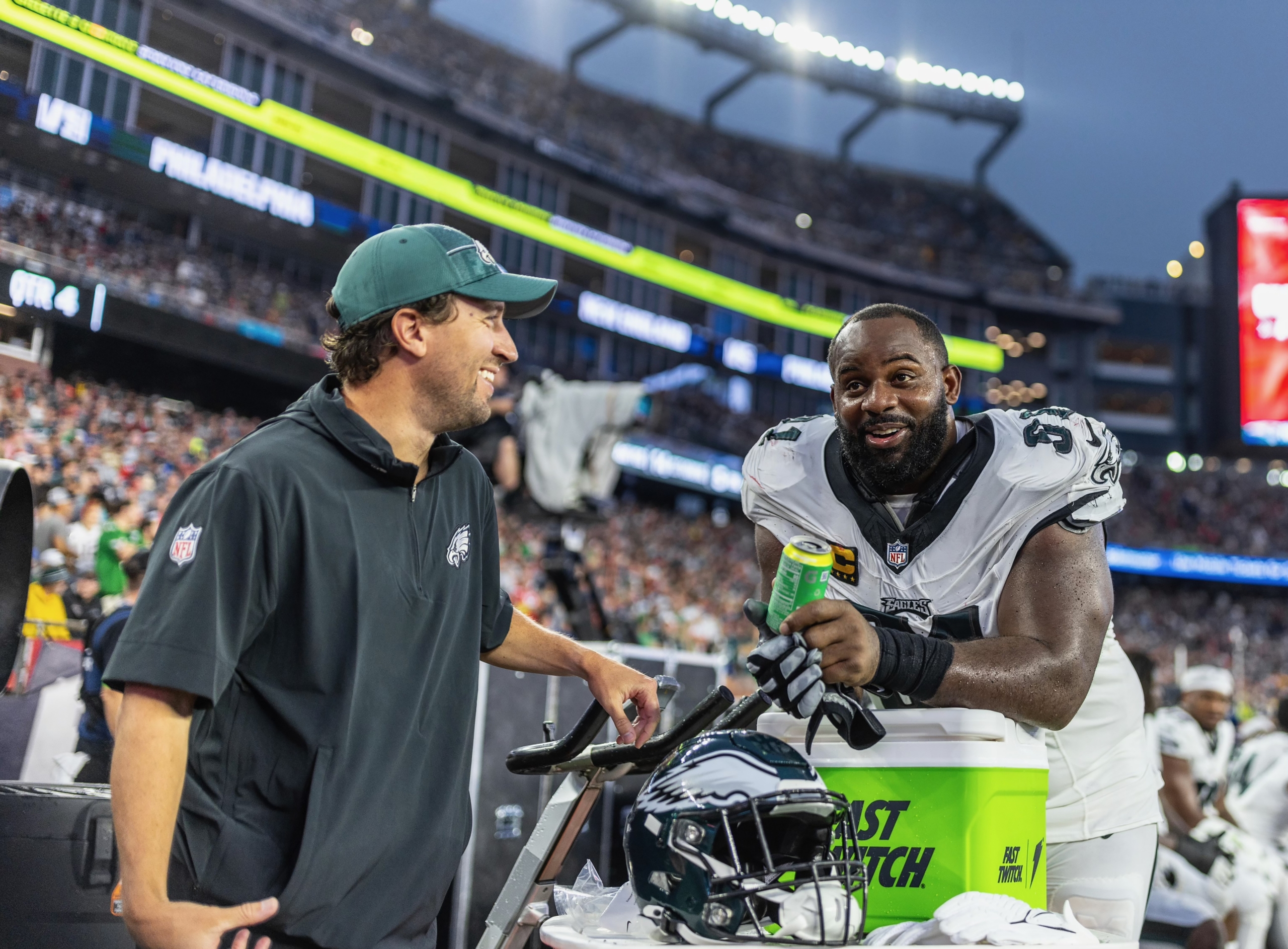
Talking Points: Brett Strohsacker ’06 As VP of football communications for the Philadelphia Eagles, Strohsacker helps both individuals and the team navigate the media landscape.
Managing constant demands of the media and sports fans can be daunting, but in the case of the NFL, there’s always someone behind the scenes providing valuable assistance in balancing these professional and public expectations. For the Philadelphia Eagles, that person is Brett Strohsacker ’06, vice president of football communications. Strohsacker and his team of six communications professionals serve as a conduit between members of the Eagles organization and any outside entity that influences public perception of the franchise — a near-impossible task given Philadelphia’s reputation as a tough sports media market.
“In addition to organizing and managing all of the press conferences and availabilities required through the NFL, our primary role is to assist our players, coaches and executives in all of their interactions to help shape their public image,” he says.
While the lion’s share of this work involves the players and coaches, Strohsacker notes that these interactions are not limited to just the faces you see on the field. Their communication services apply to any employee, such as the 30 coaches and front office members and 70 to 90 players, participating in a speaking engagement, sitting on a panel, talking to a class or performing an interview.
“It’s not only about making sure they are prepared for each interaction they have with the media, but also helping them understand the bigger picture media landscape of the NFL and our local market,” he says. “We develop strategies for the individual players and our organization as a whole.”
Mapping a career route
A four-year member of the Generals soccer team, Strohsacker always knew something involving sports would make for a logical career, but it wasn’t until he spoke with the late Bob de Maria, professor of journalism and mass communications emeritus, that his career path came into sharp focus.
“Professor de Maria was my adviser and mentor,” says Strohsacker, who majored in journalism and mass communications. “He helped guide me toward public relations, which would blend my passion for coaching and teaching with my abilities as a writer and my interest in sports media.”
After an internship with the Baltimore Ravens training camp in 2006, Strohsacker volunteered for the NFL PR office at the 2007 Super Bowl. It was there he met then-Eagles PR Director Derek Boyko, who offered him an internship that kicked off his now 17-year career with his hometown organization (Strohsacker is a Wynnewood, Pennsylvania, native).
As a former college athlete, Strohsacker often draws from his own athletic experiences when helping his players navigate the highs and lows of competitive sport. One of the most difficult aspects of his job is preparing players and coaches for their press conferences in the immediate aftermath of a difficult loss — few were more devastating than the Eagles’ 38-35 last-minute setback to the Kansas City Chiefs in Super Bowl LVII in 2023.
“The NFL is a much different level than Division III soccer, but I am at least able to understand how they may feel after a win or loss or at various points of the season,” he says. “I know what it’s like to go through an injury or have something going on in your personal life but still be expected to perform at a high level on the field. All of that understanding builds empathy and trust with players and coaches.”
The Super Bowl is arguably the pinnacle of American sports and the crowning achievement for any football player. The big game is among the most-watched events on American television, and the intense media attention creates a high-pressure situation for the professional football organizations and their communications teams. In a typical week during the season, the Eagles communications staff hosts 30 to 40 media members for weekday activities and approximately 250 writers, photographers and videographers on game days. For perspective, the NFL issued more than 6,000 media credentials for this past February’s Super Bowl LVIII between the Kansas City Chiefs and San Francisco 49ers.
“The stakes are much higher for the Super Bowl because the attention and scrutiny are at an all-time high,” says Strohsacker.
While Strohsacker’s role overlaps with many sectors of the Eagles organization, he maintains a special bond with one co-worker in particular — his wife, Maura, who serves as the team’s director of corporate partner activation. Together, they’re part of the large network of dedicated professionals who have helped set the Eagles up for success, including the Eagles’ first Super Bowl victory — a 41-33 win over the New England Patriots in Super Bowl LII in 2018.
“Being a lifelong Eagles fan and now working for the team for almost half of my life, it was an incredibly rewarding experience to be a part of the first Super Bowl win,” says Strohsacker. “The Eagles had fallen short of winning a championship many times, so it not only meant a lot to the organization but to our fans and to the city of Philadelphia. It truly does take everyone to achieve something like that, so to be along for that ride and to contribute in even the smallest way to something that brought so much joy to so many people was truly special and something I’ll never forget.”
This article originally appeared in the Summer 2024 issue of W&L: The Washington and Lee Magazine.

Behind the Crowning Moment
“One instance I always think back on is (former center) Jason Kelce’s speech at the 2018 Super Bowl victory parade. I had a general idea of where he was going with it, because, as he often likes to do, he used us as a sounding board for a couple of his ideas the day before. But as a PR person, no matter how much trust you have in your people, you always have a certain level of anxiety once the interview begins and you are no longer in control. When I saw Jason get up there in full mummer costume after having consumed what he estimated was ‘north of 20 beers,’ there were certainly a few moments where I couldn’t help but be worried about what was about to happen.
But, in the end, it will go down as one of the greatest speeches in the history of the city, which says a lot, considering Philadelphia was the birthplace of America.” — Brett Strohsacker ’06
 Philadelphia Eagles Vice President of Football Communications Brett Strohsacker ’06 talks with defensive lineman Fletcher Cox on the sidelines.
Philadelphia Eagles Vice President of Football Communications Brett Strohsacker ’06 talks with defensive lineman Fletcher Cox on the sidelines.
You must be logged in to post a comment.